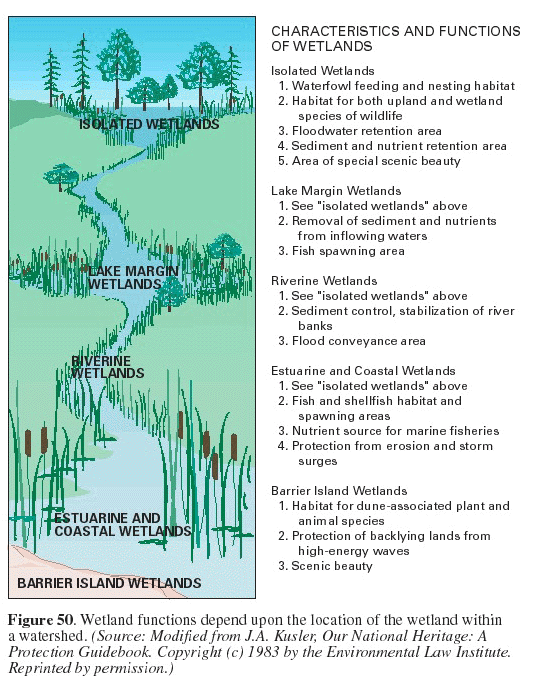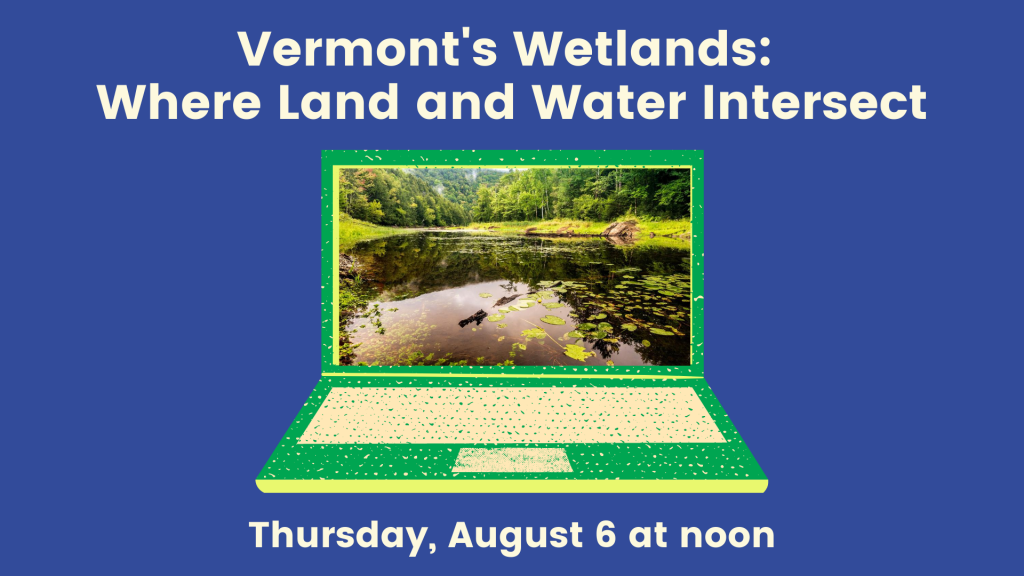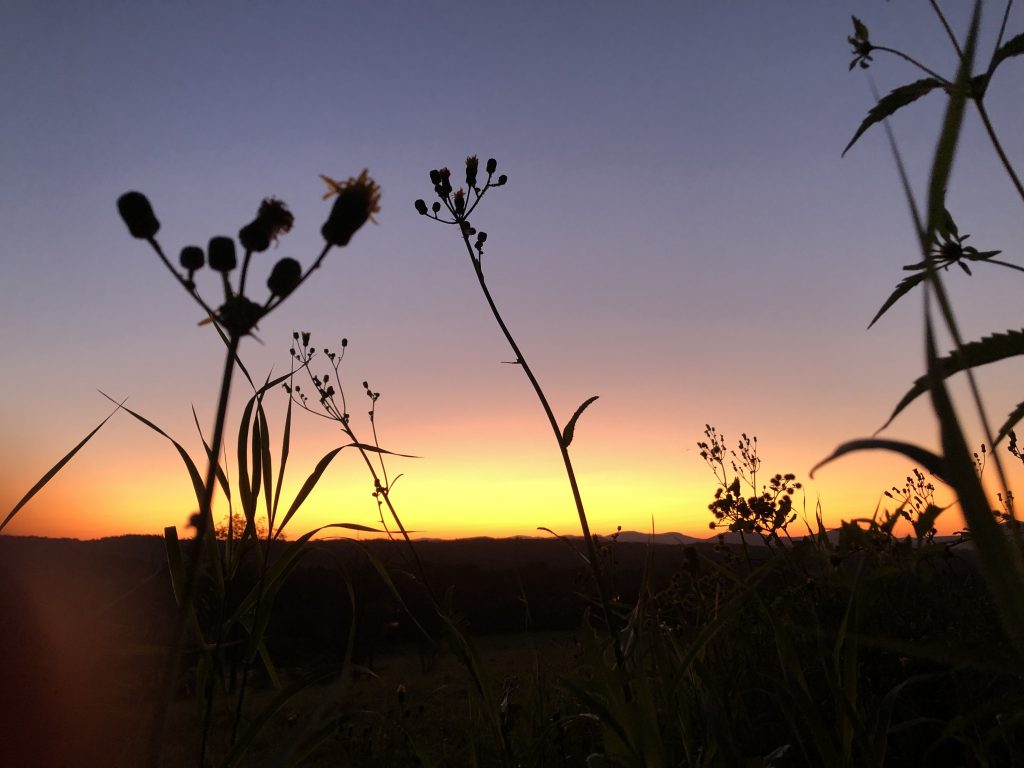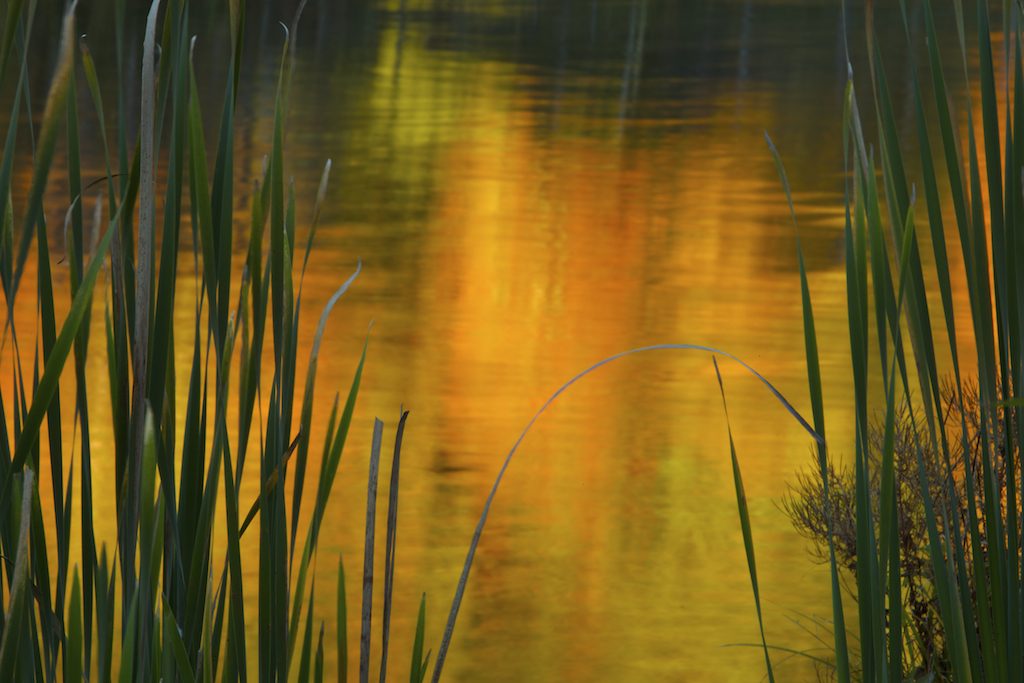Protecting Vermont’s wetlands
Wetlands are where groundwater and surface water come together. They help control flooding, minimize erosion, purify water, and offer habitat for Vermont’s flora and fauna. Wetlands include bogs, marshes, fens, swamps and other areas where water influences plant and animal communities. In Vermont, wetlands are often associated with lakes, ponds, rivers, and streams.
According to the Vermont Fish and Wildlife Department, nearly 50 percent of Vermont’s historic wetland area has been lost or severely impaired due to draining, dredging, filling, or excavation activities associated with industrial, residential, and agricultural activities. It is estimated that since 1995, the rate of regulated wetland loss in Vermont has been 20 acres annually. In addition, there is likely a similar amount of unregulated wetlands that are lost each year.
Vermonters recognize wetlands as valuable natural resources that provide many important direct and indirect benefits. In recent years, VNRC has helped advance legislation and regulatory changes that add protections for wetlands and we continue our vigilance in protecting these important natural features.
2021 recommendations from VNRC and partner groups to improve wetland protection in Vermont

In April 2021 VNRC, along with our partners at the the Conservation Law Foundation (CLF), The Nature Conservancy in Vermont (TNC), Audubon Vermont, and Lake Champlain Committee (LCC), communicated policy recommendations to improve wetland protection in Vermont.
Our recommendations included support of H.108, a bill to help protect wetlands by clarifying that they are addressed in Vermont’s water laws, and by requiring that projects with large wetland impacts undergo a rigorous analysis and avoid impacts when alternatives exist.
Below, find the policy recommendations our groups have developed and scientific papers that detail the ecological importance of wetlands.
Wetlands: Workhorse of Vermont’s Ecosystems
Prepared for Vermont’s Senate Committee on Natural Resources and Energy
Ecosystem Services of Wetlands
from the International Journal of Biodiversity Sciences
Background info on Vermont wetlands
Updated April 2021
Biogeochemical hotspots: Role of small water bodies in landscape nutrient processing
Research article from AGU Publications (Advancing Earth and Space Science)
2020 webinar about Vermont’s wetlands
In August 2020, Jon Groveman and Karina Dailey led a webinar all about Vermont’s wetlands. You can find the recording here: https://youtu.be/yoXcE4zgaiI
What is squishy, vegetated, and mottled? A wetland, of course! These unique ecological areas protect and improve water quality, provide fish and wildlife habitat, store floodwaters, and maintain surface water flow during dry periods.
Learn about how these unique natural areas are defined scientifically, how they function, common types seen in Vermont, and how they are protected under Vermont law. In particular, we discuss some of the proposed changes to the Vermont Wetland Rules that are being considered by the Agency of Natural Resources (ANR), and issues related to farming that are currently under debate.
Spotlight on LaPlatte River Marsh Wetlands
In 2017, VNRC submitted a petition to the Vermont Agency of Natural Resources to designate Class I protections for the LaPlatte River Marsh Wetlands in Shelburne. The following year, this 270-acre biodiversity hotspot received the state’s highest class of wetlands protection, making it one of just six wetlands in Vermont to gain this designation.
The LaPlatte River Marsh is an oasis in Chittenden County, providing habitat to at least 60 species of birds, 20 species of mammals such as otters, mink and muskrat, and 50 species of reptiles, amphibians, and fish – including at least 22 rare, threatened, or endangered plant and animal populations. Moreover, the LaPlatte’s wetland ecosystem is essential to helping filter and clean the water that empties into Lake Champlain and is part of nature-based solutions for maintaining water quality.
Under Vermont law, anyone can petition for Class I “enhanced protection” for particular wetlands by demonstrating that the wetland is exceptional or irreplaceable in its contribution to Vermont’s natural heritage. VNRC hired scientists to prepare a report on the area’s ecology to support our petition; the petition then underwent an extensive review process, including multiple public meetings.
We are honored to have played a major role in securing the highest class of protection for the beloved LaPlatte natural area.







